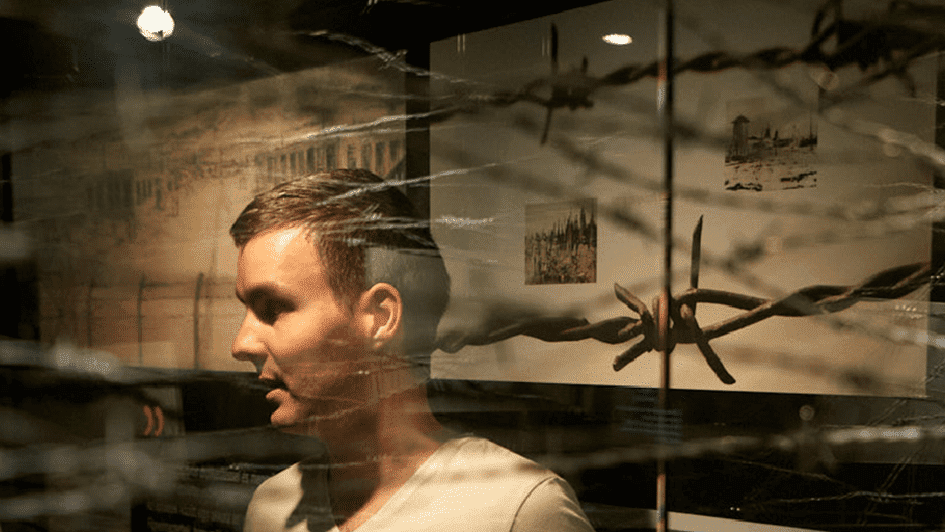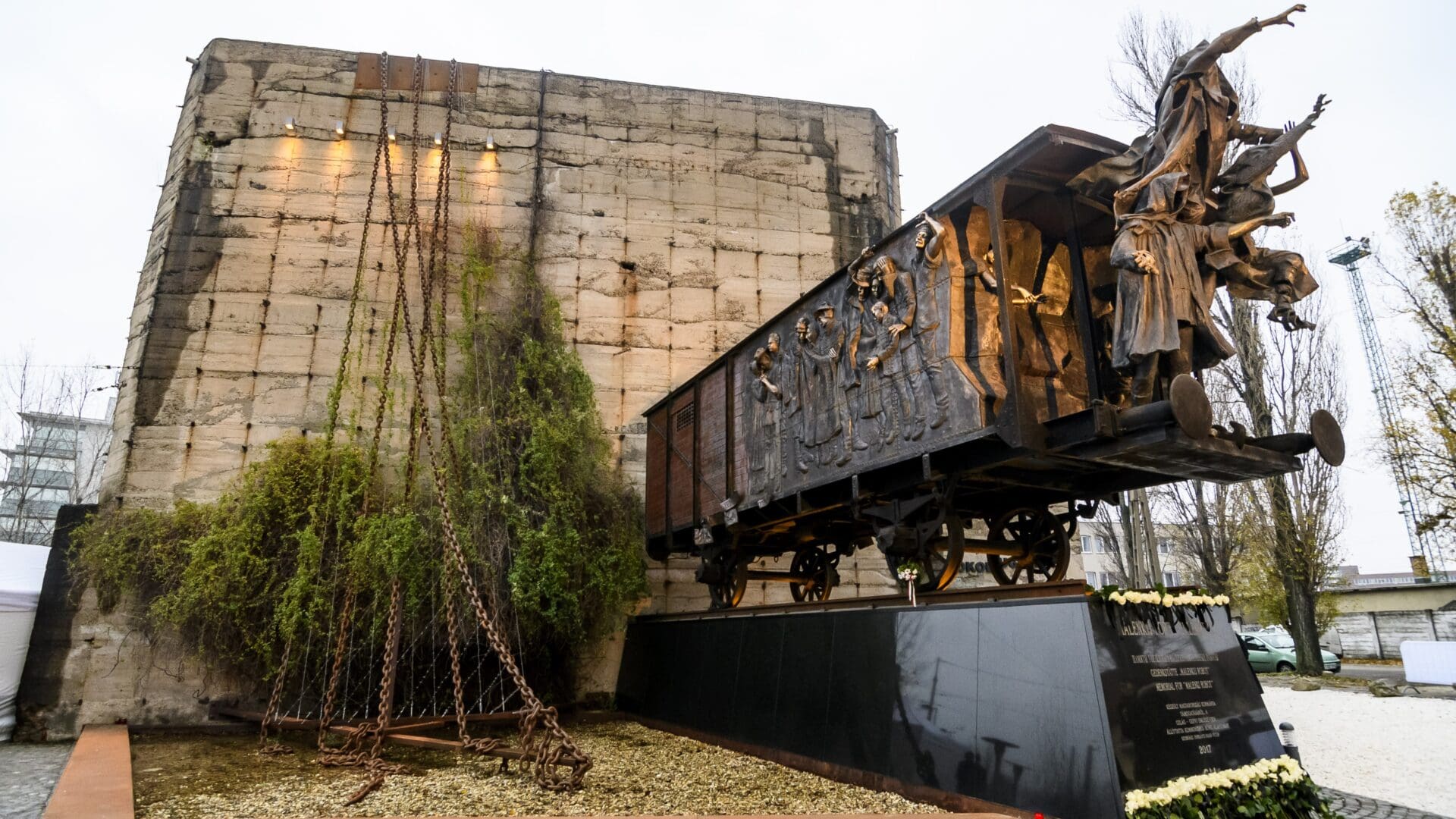To mark the Memorial Day for the Victims of Communist Dictatorships, Hungarian Conservative interviewed Márton Fülöp, cultural manager at the Department of Museum Pedagogy and Knowledge Dissemination at the Hungarian National Museum.
What does the Malenki Robot Memorial commemorate and what is the institute’s mission?
The Malenki Robot Memorial commemorates those civilian Hungarian citizens who were deported to the Soviet Union for forced labour at the end of the Second World War, that is, at the end of 1944, and in the first half of 1945. The term ´malenki robot´ that covers this sequence of events, comes from a Russian term, ´malenkaya rabota´, and it means small work. With these words, the Soviets convinced the abductees that they would only take them for a few days of ´small work´, as a form of reparations. But in reality, this turned out to be many years, if the abductees even survived for that long. Basically, we commemorate their story, but at the same time, we also present objects and sources that commemorate other people too who were taken away. More than half a million Hungarian soldiers were captured as prisoners of war, so we commemorate prisoners of war too, as well as people who were dragged to the GULAG labour camps as political prisoners. In general, these different groups tend to get mixed up in the public mind, so it must always be emphasised that the people taken for malenki robot were civilians or demobilised soldiers who were abducted without a trial. Therefore, we want to present this story as authentically as possible, commemorating it, making it as widely known as possible in the Hungarian society with the help of various programmes.
What fate awaited those Hungarians like who were taken to malenki robot? What did they have to endure in the Soviet Union and after returning home?
Their sufferings already began during the deportation, many of them did not even make it alive to their destination, but died on the way to the Soviet Union. These people were not even registered, so there is no information about how many they were. The purpose of their abduction was to rebuild the Soviet infrastructure that had been practically destroyed in the war, so to use them for free slave labour. Both men and women were made to do hard physical work. For example, many people worked in the coal mines in today’s Donbas in Eastern Ukraine, but they also worked in other mines, they were involved in rebuilding factories, building roads, railways, bridges, and worked on logging.
A third of those who were taken away never returned home. Those who did return did not have an easy time either, as they had to face the fact that the Communists had already taken over. So they returned home to a new world where they were forced to keep quiet about what had happened to them. Anyone who didn’t keep quiet about having been deported could soon find themselves in the Recsk labour camp (a labour camp in Hungary modelled after the Soviet GULAGs). In addition, they did not receive any reparations, so the years spent in the Soviet Union were practically lost years. Very often they returned home in a very bad physical condition, so many of them died a few years after returning home.

25 February is dedicated to the victims of communism. How does the Malenki Robot Memorial commemorate the victims of communism this year?
Unfortunately, we can officially reopen only in March, we are now closed due to the winter and the economic situation. Therefore, probably, this year’s commemoration will be very modest. It will most likely be only a small commemorative ceremony. On these occasions we always lay wreaths or light candles, but we have also organised theatre performances, or other various interactive events.
25 February became an anniversary because Béla Kovács, the Secretary General of the Smallholder Party, was kidnapped and taken to the Soviet Union on this day (in 1947), so this became the Memorial Day of unjust deportations. But there will be other opportunities too to commemorate this year. 23 August is the commemoration day of totalitarian dictatorships, and towards the end of the year, 25 November is the memorial day of political prisoners and forced labourers who were taken to the Soviet Union.
Is the memorial visited by many foreign tourists? What is their impression of malenkij robot, how much do they know about the crimes of communist dictatorships?
Relatively rarely, but fortunately, we have more and more foreign visitors. Last year, for example, we had German, Brazilian and British visitors. They have some knowledge of what happened in the Soviet Union, but primarily they have heard of only the GULAGs. The fact that civilians were abducted en masse without trial is much less well-known. People are often shocked by this, especially by such large numbers of people having been affected. Interestingly, in some of the affected countries, for example, people are still not aware of the scale of deportation. Many civilians were abducted from East Germany, for instance. The memory of malenki robot is not well-known, it is under-researched and therefore, many people are shocked even if they come from countries like s Germany.
A few years ago, the Hungarian National Archives published a database on those deported to the Soviet Union. With the help of this database, the family members of the abductees can trace the fate of their ancestors. What is the significance of the database, how did the Hungarian National Archives acquire it?
As far as I know, it was a long process, until all or almost all available data was sent to the Hungarian state. First, there was a precedent for this in the early 1990s, when the Hungarian state received a database of approximately 60,000 prisoners of war who died in the Soviet Union. And then in 2015, during the GULAG Memorial Year when the GULAG Memorial Committee was established, they supported the National Archives to start the research, forming a joint committee with the Russian State Military Archives. After several years of research and cooperation, a database containing nearly 700,000 data was eventually handed over to the Hungarian state.
It must be emphasised that this only gives an account of the fate of those people who did arrived in a detention camp (that is, those who died on the way are not registered at all), nevertheless, it is also a great help. The significance of this dataset is that many people took their stories with them to the grave, they didn’t have the opportunity to tell their relatives during their lifetime what happened to them, so the dataset perhaps offers some form of reconciliation for the relatives. They can learn about the fate of their ancestors through this database. By the way, this is a very well-searchable database. Obviously, the Soviet authorities did not record the data in the most precise way at the time, the Russians may have misheard details (the Cyrillic transliteration of Hungarian names and place names was done very imprecisely and inconsistently), but in such cases, the system also offers possible surname variations or placename variations, so that it is often possible after all to do research thanks to this database quite precisely.
How do we remember malenki robot? What did 1989 change in the memory of the deportations?
After the regime change, talking about malenki robot was no longer taboo, so the scientific and social processing of this topic could begin. But even though there have already been many studies on the forced labour in the Soviet Union, we can say that the processing of it is still in its infancy. Even after 1989, many survivors did not dare to open up about their experiences. The decades-long fear of atrocities was very deeply ingrained in them, and the number of people who dared to tell about what happened to them is quite low. By now, there are very few survivors who are still alive. So, any social dialogue on malenki robot should be welcomed, it helps in ingraining it into our historical memory by making people aware of what happened. But a lot of people still don’t know about the fate of Hungarians at the forced labour camps, which is why we want to address, for example, student visitors. Information about malenki robot is now part of the Hungarian core curriculum, and students may also have relatives who can tell them stories about it. Nevertheless, we also want to educate students, too and to draw their attention to the fact that this is a story that has not been processed and talked about for decades. As the Hungarian society was unable to talk it through, I think malenki robot has inflicted quite a lasting injury, a serious wound on Hungarian society, which, unconsciously, but still makes its impact felt. To some extent those who were abducted passed down the traumas they experienced, so even in current generations, in the behavioural patterns that were transmitted down, these traumas can be observed, they are being felt in the Hungarian society and how we think.
Would you mind elaborating on this last thought in a bit more detail? What do you mean by transmitted traumas?
There is a stereotypical but to a great deal true observation that we are a pessimistic nation, we think that we have always been on the losing side of history. I think the events of 1944-45 greatly contributed to the fact that these negative ideas could have become ingrained in the Hungarian psyche.
Do you think that if young people learn more about the past and process these traumas, this pessimistic view of Hungarian history can be changed?
Obviously, this is a very long process, but maybe this can be a good start to resolve it in the long term and guide people towards a more positive thinking and a more positive historical awareness. Yes, I think so. It may be a very small step, but I think processing and talking about malenki robot is very important.








